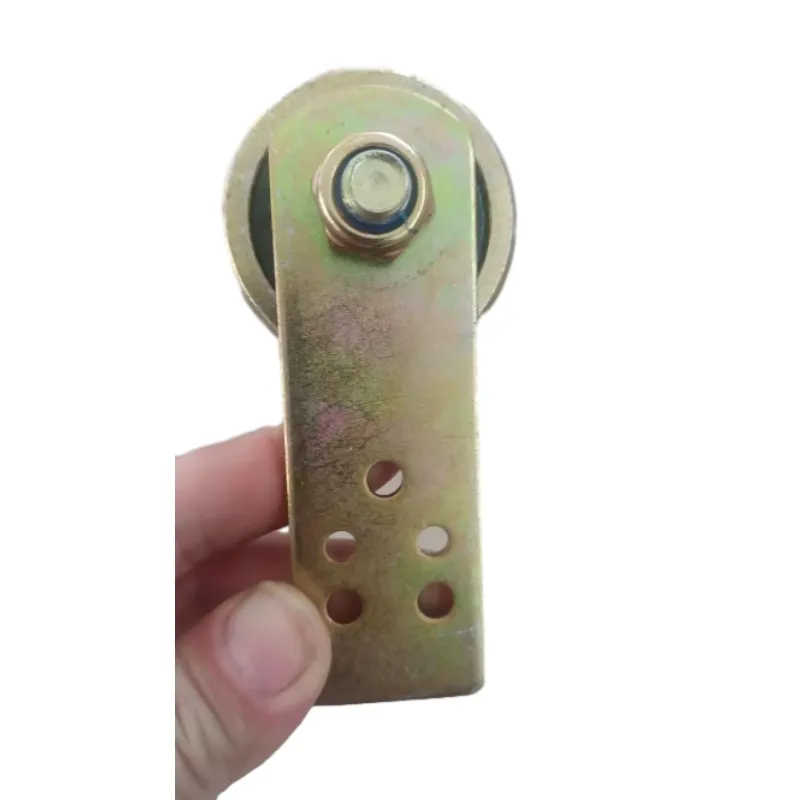
Nov . 06, 2024 06:48 Back to list
Bearing Analysis for Cylindrical Applications in Mechanical Engineering and Design Solutions
Understanding Bearing Cylindrical An Essential Component in Machinery
Bearings are fundamental components in a variety of mechanical systems, playing a crucial role in reducing friction and wear between moving parts. Among the various types of bearings, cylindrical bearings stand out due to their specific characteristics and applications. This article delves into the anatomy, functioning, advantages, and applications of bearing cylindrical systems, shedding light on why they are integral to modern machinery.
What is a Cylindrical Bearing?
Cylindrical bearings are a type of rolling element bearing designed to support radial loads and, to some extent, axial loads. The construction consists of cylindrical rollers arranged parallel to the axis of the bearing. These rollers have a larger diameter than the space between them, which allows for the distribution of loads across the surface area, significantly reducing the friction encountered in motion.
Cylindrical bearings are categorized into two main types plain cylindrical bearings and rolling element cylindrical bearings. Plain cylindrical bearings function without rolling elements, relying on a lubricated surface to minimize friction. Rolling element cylindrical bearings, on the other hand, incorporate cylindrical rollers that roll rather than slide, thus achieving greater efficiency and load capacity.
How Do Cylindrical Bearings Work?
The working mechanism of cylindrical bearings is relatively simple yet highly effective. When a shaft rotates, the cylindrical rollers within the bearing allow for smooth motion by rolling along the inner and outer raceways. This rolling motion minimizes contact area compared to sliding surfaces, which significantly reduces frictional resistance and wear.
Additionally, cylindrical bearings are designed to handle high radial loads, making them ideal for applications where heavy equipment operates under load. The design allows for high-speed rotation, which is essential in industries such as automotive, aerospace, and industrial machinery.
bearing cylindrical

Advantages of Bearing Cylindrical Systems
There are several intrinsic advantages to using cylindrical bearings over other types. Firstly, their design allows for high load-carrying capacity—particularly advantageous in machinery subjected to heavy forces. Secondly, they exhibit low friction, which results in better energy efficiency and less heat generation during operation. This aspect is crucial in extending the lifespan of both the bearings and the machinery they support.
Another notable advantage is the ease of installation and maintenance. Modern cylindrical bearings often come in sealed designs, reducing the need for regular lubrication and cleaning. This feature is particularly valuable in time-sensitive industrial environments where machinery uptime is critical.
Applications of Cylindrical Bearings
Bearing cylindrical systems are used in a wide range of applications across various industries. They are prevalent in automotive engineering, where they support rotating shafts in engines, transmissions, and wheel hubs. In the aerospace industry, cylindrical bearings are employed in aircraft engines and landing gear systems, providing the reliability needed for safe commercial and military flights.
Additionally, they are crucial in heavy machinery, such as excavators, bulldozers, and agricultural equipment, where they manage high loads and facilitate smooth movement. Also, they are found in electric motors, construction tools, and even household appliances, showcasing their versatile and essential role across multiple sectors.
Conclusion
Cylindrical bearings represent a vital component that has greatly contributed to the efficiency and reliability of modern machinery. Their ability to withstand heavy loads while minimizing friction makes them indispensable in various applications. Understanding the mechanics, advantages, and uses of bearing cylindrical systems not only highlights their importance but also underscores the role of precision engineering in improving the performance and longevity of mechanical devices. As industries continue to evolve, the demand for efficient, durable, and low-friction solutions like cylindrical bearings will undoubtedly persist, paving the way for further innovations in bearing technology.
Latest news
-
Premium Deep Groove Ball Bearings | High Speed & Reliability
NewsAug.29,2025
-
Durable Scaffolding Clamps - Secure & Reliable Tube Connectors
NewsAug.28,2025
-
Common Failures in Thrust Ball Bearings and Solutions
NewsAug.22,2025
-
How Tapered Roller Bearings Can Take Shock Loads
NewsAug.22,2025
-
Angular Bearings in High-Precision Spindles
NewsAug.22,2025
-
The Impact of Misalignment on Cylindrical Roller Bearing Performance
NewsAug.22,2025
